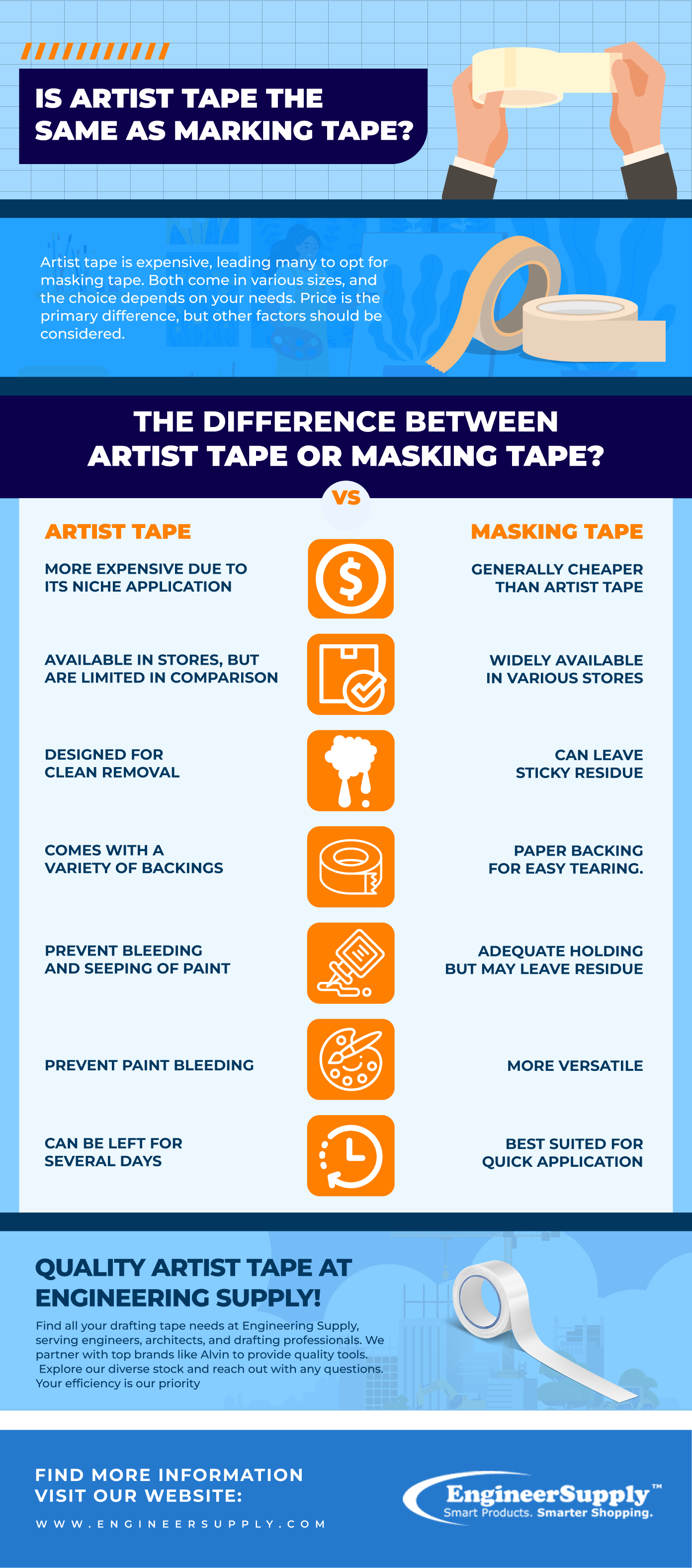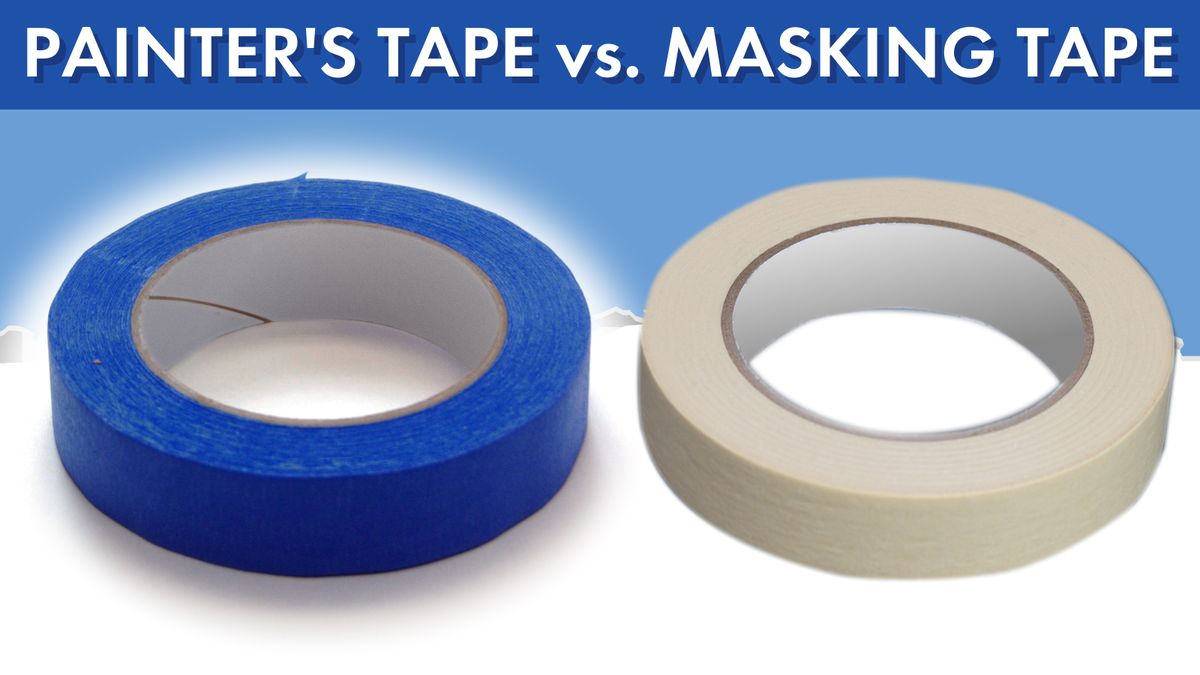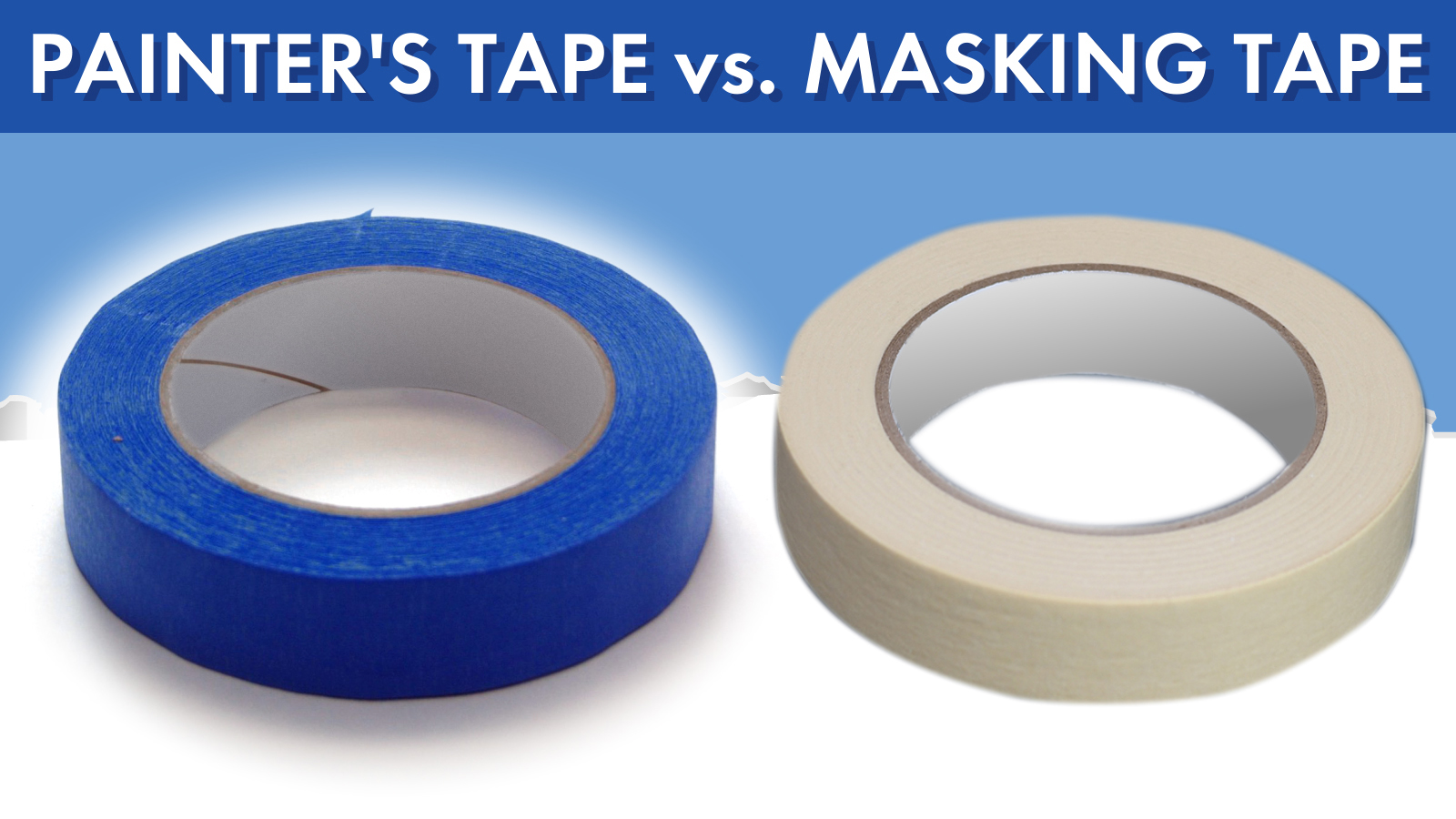Artist tape is low-tack and safe for delicate surfaces, while masking tape has stronger adhesion. When choosing between artist tape and masking tape, consider the surface type and level of adhesion needed for the project.
Artist tape is ideal for preventing damage to paper, canvas, and other fragile surfaces during painting or drafting. On the other hand, masking tape is better suited for general purpose tasks like securing paper or light adhesion applications. Understanding the differences between artist tape and masking tape will help you select the right tape for your specific project needs.
Introduction To Artist And Masking Tape
Artist tape and masking tape are two types of tapes that are commonly used in different applications. While they may look similar, there are some distinguishing features that set them apart from each other.
Distinguishing Features:
Artist tape is usually made of paper or vinyl and has a low tack adhesive. This type of tape is commonly used in the art industry for delicate projects. On the other hand, masking tape is made of crepe paper and has a moderate to high tack adhesive. This type of tape is commonly used in painting and construction projects.
Common Uses:
Artist tape is commonly used to protect delicate surfaces or to create clean and straight lines on artwork. It is also used to mount artworks onto surfaces. Masking tape, on the other hand, is commonly used in painting projects to protect areas that do not need to be painted. It is also used in construction projects to hold materials together temporarily.
| Tape Type | Material | Adhesive Strength | Common Uses |
|---|---|---|---|
| Artist Tape | Paper or Vinyl | Low Tack | Artwork, Delicate Surfaces |
| Masking Tape | Crepe Paper | Moderate to High Tack | Painting, Construction |
Material And Composition
Artist tape and masking tape have different base materials. Artist tape is typically made from a thin and flexible paper material, while masking tape is usually made from a stronger and more durable crepe paper. The adhesive quality of artist tape is designed to be low-tack, making it easy to remove without damaging delicate surfaces. On the other hand, masking tape generally has a stronger adhesive, making it suitable for more heavy-duty applications where a secure bond is required. When choosing between the two, consider the specific needs of your project to determine which tape will provide the best results.
Adhesion And Removability
Artist tape and masking tape are both commonly used in various art and crafting projects. One important aspect to consider when choosing between the two is their adhesion and removability.
The stickiness factor of artist tape is crucial as it determines how well it adheres to different surfaces. It needs to have enough adhesion to securely hold materials in place, but not so much that it damages delicate surfaces upon removal.
On the other hand, masking tape is known for its ability to stick firmly to surfaces, making it ideal for projects that require sharp lines or precise masking. However, it may leave behind residue or damage surfaces when removed.
When it comes to residue concerns, artist tape is designed to be low-residue, minimizing the chances of leaving any sticky residue behind. This makes it a preferred choice when working with delicate materials or when a clean removal is desired.
In conclusion, while both artist tape and masking tape have their own advantages, it is important to consider the specific requirements of your project, including the desired level of adhesion and removability, as well as any concerns regarding residue.

Versatility In Applications
Artist tape and masking tape offer versatility in applications. Artist tape is designed for delicate surfaces and leaves no residue, making it ideal for artwork and creative projects. Masking tape is more suitable for general purposes like painting, labeling, and securing objects due to its easy removal and adhesion properties.
| Artist Tape | Masking Tape |
| Primarily used by artists and painters | Commonly used for general purposes |
| Low-tack adhesive | Medium to high-tack adhesive |
| Ideal for delicate surfaces and intricate designs | Suitable for rougher surfaces and basic painting tasks |
| Available in a variety of widths and colors | Usually comes in standard widths and white or beige color |
Resistance To Elements
When it comes to resistance to elements, artist tape outperforms masking tape in several aspects. Artist tape is designed to withstand heat and UV exposure, making it an ideal choice for outdoor applications. The adhesive and backing of artist tape are formulated to endure prolonged exposure to sunlight without deteriorating, ensuring that the tape remains securely in place. In addition, artist tape exhibits excellent resistance to moisture and humidity, making it suitable for use in damp or wet conditions. This resistance helps prevent the tape from peeling or losing its adhesive properties, ensuring reliable performance in various environments.

Precision And Edge Finish
Achieve precision and a flawless edge finish with artist tape, a superior choice compared to masking tape. This high-quality tape ensures clean lines and crisp edges, making it the perfect tool for artists and DIY enthusiasts seeking professional results. With its precise application and reliable adhesion, artist tape guarantees a polished finish every time.
| Artist Tape | Masking Tape |
| Specialized tape for precise lines | General-purpose tape for basic tasks |
| Prevents bleeding for clean edges | May cause paint bleed due to adhesive |
| Ideal for delicate surfaces and detailing | Suitable for broader applications |
Cost And Affordability
Artist tape and masking tape vary in cost and affordability. While artist tape is specifically designed for artwork and may be more expensive, masking tape is a more budget-friendly option. Consider your project’s needs and your budget when choosing between the two.
| Price Comparison | Artist Tape | Masking Tape |
| Cost | $$ | $ |
| Affordability | Good for detailed work | General use, cost-effective |
| Value for Money | May be costlier but offers precision | Basic tape, budget-friendly option |
Environmental Impact And Sustainability
Choosing artist tape over masking tape can have a positive impact on the environment due to its biodegradable nature and sustainable production. With increased awareness of the environmental impact of products, it is important to consider alternatives that prioritize sustainability.
| Artist Tape | Masking Tape |
| Usually made of low-impact materials like rice paper | Often contains plastic and synthetic adhesives |
| Biodegradable and compostable | Can be challenging to recycle due to plastic content |
User Experiences And Recommendations
For artists, choosing between artist tape and masking tape can greatly affect the user experience. Artist tape provides a gentle adhesive that won’t damage delicate surfaces, while masking tape can leave behind residue and damage the work. Recommendations from fellow artists can help in making the right choice.
| Testimonials | Expert Opinions |
| Artists find Artist Tape more precise and delicate for intricate designs. | Experts suggest Masking Tape for larger surface areas and straight lines. |
| Users praise Artist Tape for clean removal without damaging paper. | Experts highlight Masking Tape‘s versatility for various painting techniques. |
| Artists value Artist Tape for its low tack and easy repositioning. | Experts emphasize Masking Tape‘s adhesion strength for crisp edges. |

Final Thoughts On Tape Selection
When it comes to choosing between artist tape and masking tape, it ultimately comes down to personal preferences. Some artists may prefer the versatility and easy removal of artist tape, while others may find the adhesion and durability of masking tape more suitable for their needs. It’s important to consider the specific requirements of your project and the surface it will be applied to before making a decision. Moreover, the intended duration of use and the level of precision required are also crucial factors to take into account. In addition, experimenting with both types of tape in different scenarios can help in determining which one works best for your individual style and techniques.
Frequently Asked Questions
What Is Artist Tape Used For?
Artist tape, also known as drafting tape or artist masking tape, is used to mask areas of artwork that need protection during painting. It is low-tack and easily removable without damaging the surface. It is also used for labeling and organizing artwork.
What Is Masking Tape Used For?
Masking tape is a general-purpose adhesive tape with medium to high tack. It is used for various tasks, including painting, DIY projects, and labeling. However, it is not recommended for use on delicate surfaces as it can leave residue or damage the surface.
What Is The Difference Between Artist Tape And Masking Tape?
The primary difference between artist tape and masking tape is their level of tackiness. Artist tape is low-tack and easily removable, making it suitable for use on delicate surfaces. In contrast, masking tape has medium to high tack and can leave residue or damage surfaces.
Can I Use Artist Tape Instead Of Masking Tape?
Yes, artist tape can be used instead of masking tape for certain tasks, especially when working with delicate surfaces. However, masking tape is generally more versatile and better suited for general-purpose use.
Conclusion
While both artist tape and masking tape serve a similar purpose in the world of art and crafting, there are notable differences between the two. Artist tape offers greater versatility, precision, and ease of removal, making it the preferred choice for professionals and those seeking high-quality results.
On the other hand, masking tape is more readily available and suitable for temporary applications. Ultimately, the choice between artist tape and masking tape depends on the specific needs and requirements of the project at hand.

